Introduction
This presentation is aimed at illustrating the main challenges that organizations will encounter during the next twenty years. In particular, it is necessary to focus on the following problems:
- The necessity to change organizational structure;
- Employee turnover;
- Higher standards of corporate social responsibility;
- Intensifying competition caused by globalization;
- The growing need for effective cross-cultural management.
The challenges described in this presentation will be relevant to various types of organizations that be for-profit and not-for-profit.
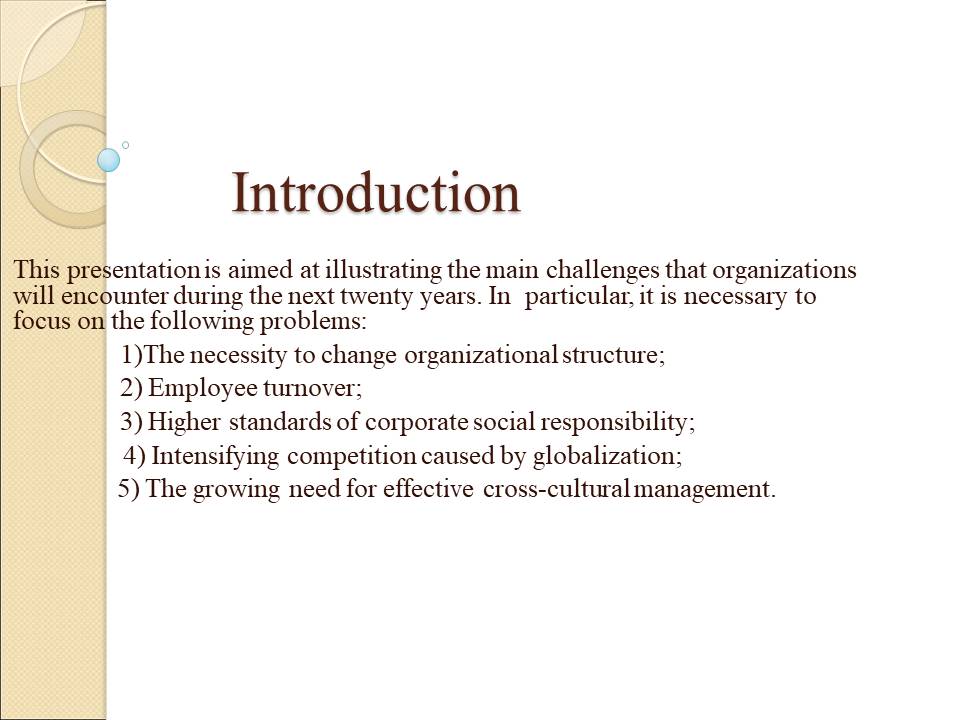
The necessity to transform organizational structure and design
Organizations may need to change their structure in order to respond to various internal and external problems; for instance, one can mention the following issues:
- Increased competition;
- The necessity to reduce operational costs;
- The need to operate at the international level;
- Quality control problems;
- Mergers and acquisitions.
These examples illustrate external stressors and internal problems that can prompt various organizations to change their design. Business administrators and managers cannot fully shield companies against these risks. Nevertheless, they can improve the agility of organizations by hiring employees who can quickly adjust to such changes.
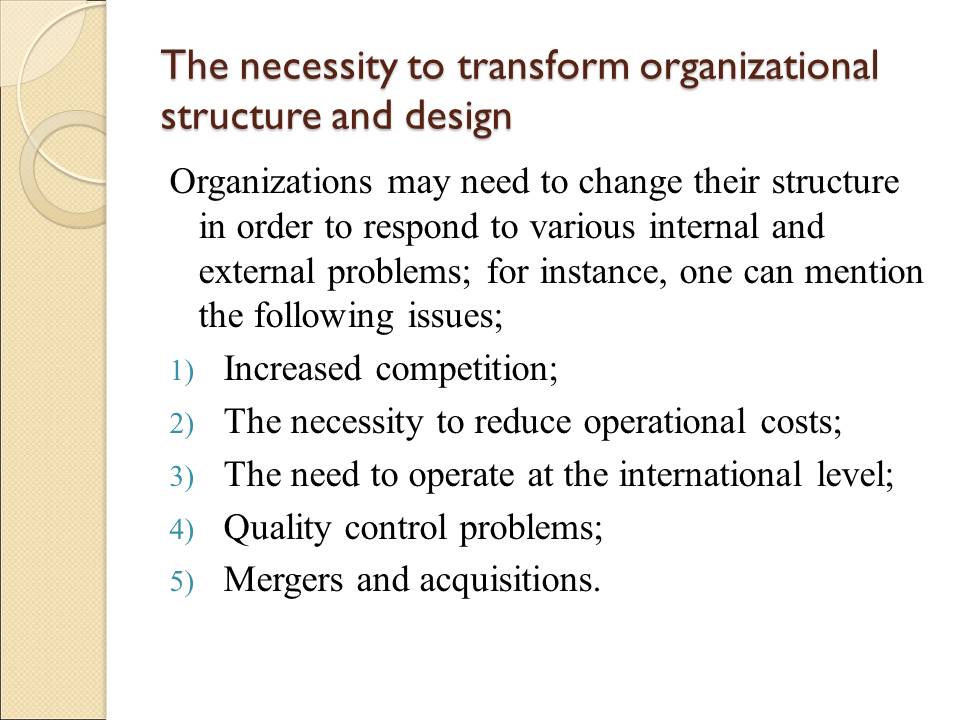
Employee Turnover
The need to reduce employee turnover has been recognized by many scholars because this problem can lead to replacement costs and poor organizational performance (Nelson & Quick, 2014, p. 110). The following chart illustrates the main costs of employee turnover (Retensa, n. d.).
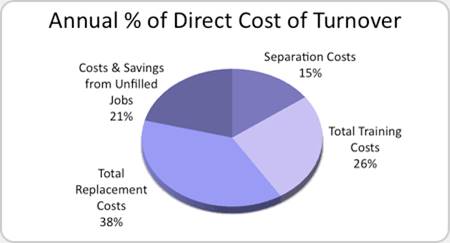
This chart has been included in order to illustrate various expenses that may arise due to employee turnover. This problem can become more acute in the future, because the development of information technologies offers people more opportunities for seeking employment. In order to overcome this difficulty, organizations should focus on their HR practices such as job design or performance assessment.
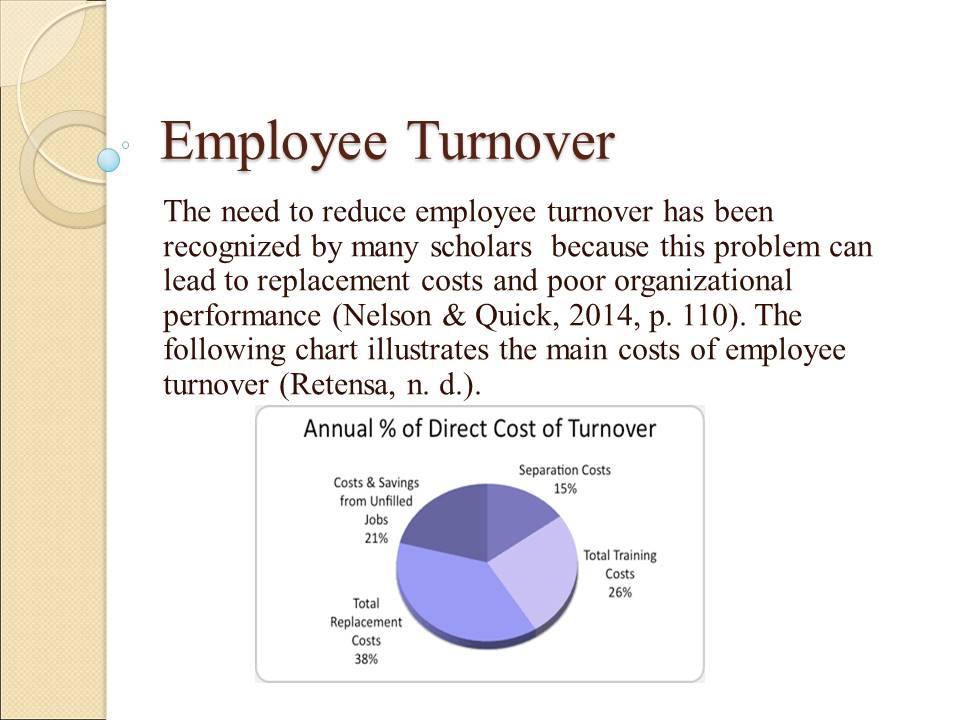
Higher standards of corporate social responsibility
In the future, customers and governmental institutions will raise higher standards of social and environmental responsibility. Companies may need to accept these standards in order to remain completive. The following table illustrates the attitudes of many consumers. These people are more likely to choose companies that try to act in an ethical way (Consumer Attitudes Toward Corporate Social Responsibility, 2013) This trend is very likely to persist during the next twenty years, because a great number of people will get access to information technologies that can help them learn more about the practices of profit and not-for-profit organizations.

Intensifying competition caused by outsourcing activities
Outsourcing trends during the last fourteen years (Statistical Portal, 2015).
This chart has been included in order to demonstrate that outsourcing of various business processes continues to remain a widespread practice among many organizations. In many cases, businesses take such steps in order to get access to the less expensive labor force. Therefore, managers should take into account that some of their competitors can significantly reduce their operational expenses. Moreover, they will have more opportunities for eroding the market share of other businesses. Companies can adopt several strategies in order to cope with this challenge. For instance, they can focus on organizational efficiency and adoption of innovative technologies that increase the productivity of an enterprise. Furthermore, they may also choose outsourcing in order to cut their costs. In each cases, companies should be ready for organizational changes and the need to make significant investments.
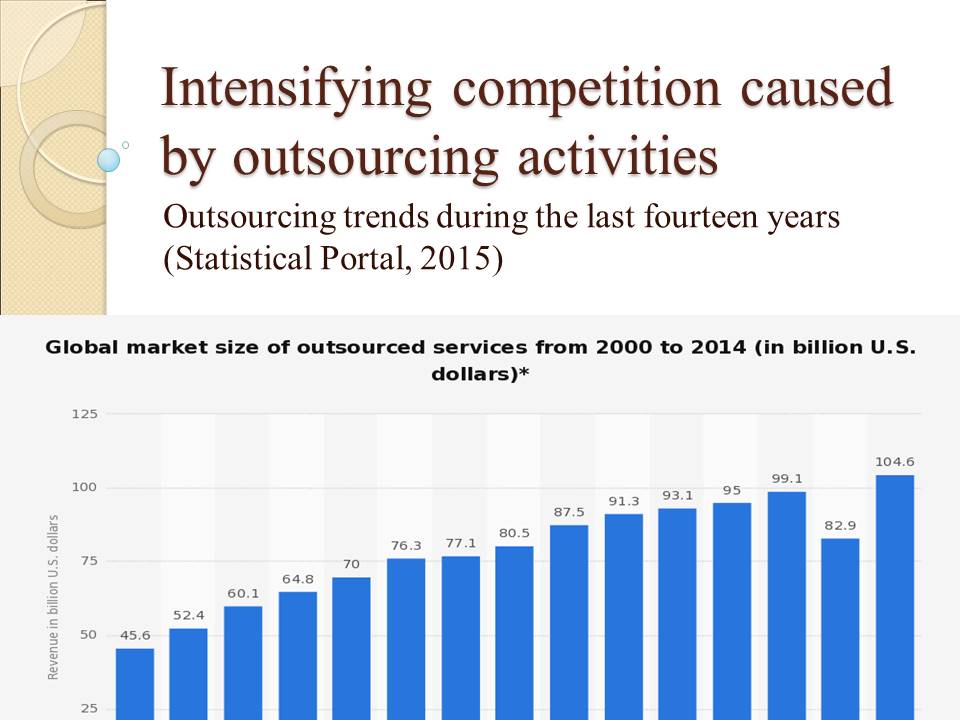
The need for effective cross-cultural management
Globalization and development of information technologies prompt organizations to work in a multi-cultural environment. They should be ready to address the following problems:
- Lack of initiative;
- Workplace conflicts;
- Groupthink;
- Job dissatisfaction;
- Increased rates of employee turnover.
The problems that have been described occur at the time, when managers fail to recognize the differences in values or attitudes between people who represent different cultures. For instance, in some cultures, workers are not expected to criticize people who occupy a higher position in the workplace hierarchy. In contrast, in other cultures, such behavior is quite appropriate. As a result, there is a significant risk of workplace problems. In turn, managers should keep in mind that in the future, the need for cross-cultural management can become even more acute because international cooperation will intensify.

Summary
This discussion illustrates that organizations should consider the following challenges and tasks:
- Various stressors that prompt organizations to change their design and structure;
- The need to improve HR practices that are related to such aspects as cross-cultural management and employee turnover;
- The necessity to focus on organizational efficiency that is critical for withstanding competition.
Some of the issues discussed in this presentation are relevant to for-profit organizations. This argument is particular relevant if one speaks about competition. Nevertheless, other challenges such as cross-cultural differences can impact various not-for-profit agencies. Therefore, these issues should be considered by business administrators working in different fields.
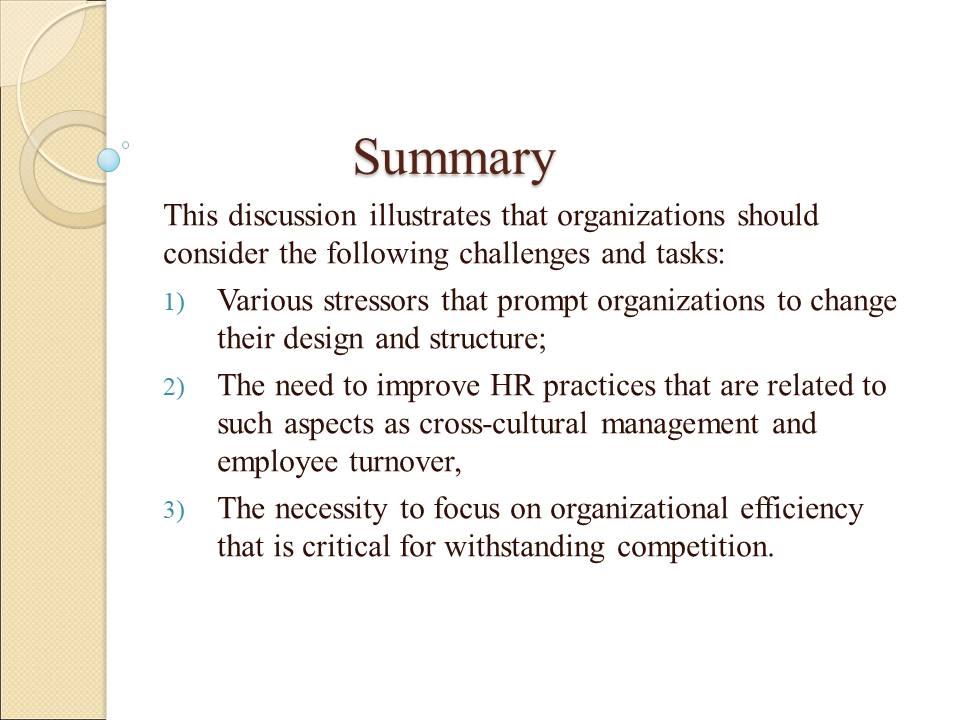
Reference List
Consumer Attitudes Toward Corporate Social Responsibility. (2013). Web.
Nelson, D., & Quick, J. (2014). ORGB 4. New York, NY: Cengage Learning.
Retensa. (n. d.). Find Your Cost of Turnover.
Statistical Portal. (2015). Global market size of outsourced services from 2000 to 2014 (in billion U.S. dollars). Web.